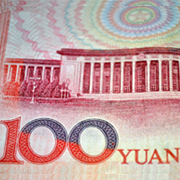Archive | Blog RSS feed for this section
Environment
 Regional cooperation and integration
Regional cooperation and integration
 Environment
Environment
 Finance sector development
Finance sector development
 Industry and trade
Industry and trade
 Finance sector development
Finance sector development
 Regional cooperation and integration
Regional cooperation and integration
 Regional cooperation and integration
Regional cooperation and integration
 Finance sector development
Finance sector development
 Miscellaneous
Miscellaneous

The food, water, energy nexus

Striking rates of economic growth notwithstanding, 550 million people remain hungry in the Asia and Pacific region, 65% of the population has no safe piped water, and more than 600 million people live without electricity. Overcoming these problems requires a combined approach in which food, water and energy are treated as a nexus, rather than as separate, standalone issues, which has too often been the case in the past.
Pacific economies: Leveraging the benefits of East Asian and Southeast Asian growth

With the center of global economic activity shifting rapidly from the United States and Europe toward Asia, opportunities are being generated for the Pacific developing member countries (DMCs) of the Asian Development Bank (ADB) to benefit from increasing economic interdependence with Asia. Economic transmission channels are (i) trade in goods; (ii) trade in services, in particular tourism; (iii) finance and foreign direct investment; (iv) labor and remittance flows; and (v) aid.
Green cities: Changing the culture of waste

Asia’s drive to urbanize is taking an increasing toll on the environment with growing mountains of solid waste as city dwellers consume and discard resources at an ever increasing rate. If “green” cities are to be the answer to these environmental stresses then they will need to develop much more effective programs to reduce, reuse, recycle and recover waste.
What to look out for in Asian bond markets in 2014

2014 is shaping up to be another challenging year for bond markets in Asia after a see-saw 2013 which saw prices rise at the start of the year, and then fall back on news that the US Federal Reserve plans to reduce or ‘taper’ its quantitative easing operations.
Use of national currencies for trade settlement in East Asia: A proposal

Financial cooperation and integration in East Asia has been languishing for almost a decade. But ASEAN, the People’s Republic of China (PRC), Japan, and the Republic of Korea (henceforth, Korea), or ASEAN+3, have been more successful in promoting free trade in East Asia by establishing a number of bilateral and plurilateral free trade agreements (FTAs) with countries in the region and outside the region.
E-commerce in Asia brings international price arbitrage opportunities

Cross-border e-commerce is booming in the Asia and Pacific region. And exchange rate fluctuations play a key role in these transactions. In their quest for the best deals, consumers in the region are taking advantage of exchange rate movements, and shop abroad whenever the exchange rate is favorable. Our research proves that short-term international price arbitrage is occurring—an important finding for monetary policy and the private sector.
Development via regional integration – Mongolia’s chance for a prosperous future

Regional integration offers Mongolia the opportunity for a more prosperous future. But the country has lagged in this effort, which is surprising given its geographical location where bold integration initiatives have been launched, such as the People’s Republic of China’s (PRC) “Silk Road Initiative,” and where economic alliances have been strengthened under Central Asia Regional Economic Cooperation (CAREC) and Shanghai Organisation for Cooperation (SCO).
Is regional economic integration in Central Asia a doomed vision or a promising future?

Central Asia has for centuries been seen as a neglected Russian “backyard,” but international interest in the region has increased over the last two decades because of its vast stores of energy and natural resources. But to achieve a brighter future the region must pursue economic integration. In the early 1990s, Kazakhstan, Kyrgyz Republic, Tajikistan, Turkmenistan, and Uzbekistan became independent countries with the collapse of the Soviet Union. The abrupt separation from Moscow, the sudden interruption of economic relations under the Soviet Union, and the unprepared transition from state-directed to market economy created a deep economic crisis in all five countries. The beginning of this century saw their economic systems change and stabilize—but this occurred as these countries disclosed strong authoritarian trends.
US dollar outlook: Secular stagnation and the threat from the East

In the eyes of many commentators, the US dollar’s reign as the global reserve currency is under threat from two angles. The first comes from within the US—a permanent deficiency in demand or secular stagnation; and the second from the People’s Republic of China (PRC), and in particular from a fully convertible yuan. In a recent seminar tour, which covered the Asia and the US, including the Asian Development Bank Institute, we spelled out why these fears are overdone. Far from being in decline, the US is in the ascendancy in our view. We summarize these arguments here.
Was it all ‘nirvana?’ Why the emerging country gloom is mistaken

Many emerging markets assets submerged in 2013 and continued to do so in early 2014. The negative reaction of currency and stock and bond prices in several emerging markets to a cautious statement (“taper talk”) by US Federal Reserve Chairman Ben Bernanke in May 2013 was swift. In early 2014, new-year recommendations by Wall Street´s biggest banks advised clients to cut their emerging-market allocations, for a diffuse variety of reasons such as elections, violence, lack of reform, and growing debt burdens.


Search
Subscribe / Connect to Asia Pathways
Subjects
- Agriculture and natural resources
- Blog
- Capacity development
- Climate change
- Economics
- Education
- Energy
- Environment
- Finance sector development
- Gender
- Governance and public sector management
- Health
- Industry and trade
- Information and Communications Technology
- Infrastructure
- Miscellaneous
- Population
- Poverty
- Private sector development
- Regional cooperation and integration
- Sanitation
- Social development and protection
- Transport
- Uncategorized
- Urban development
- Video Blog
- Water




Recent Comments